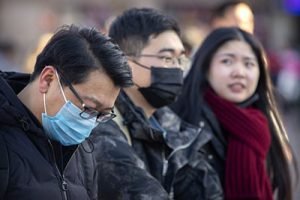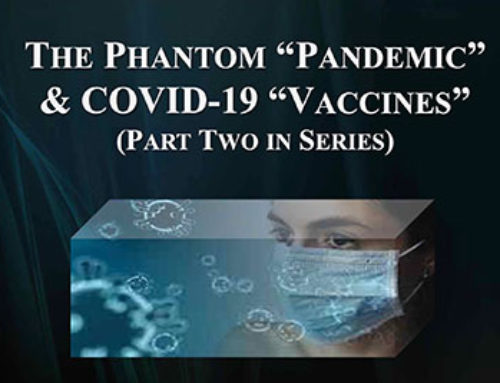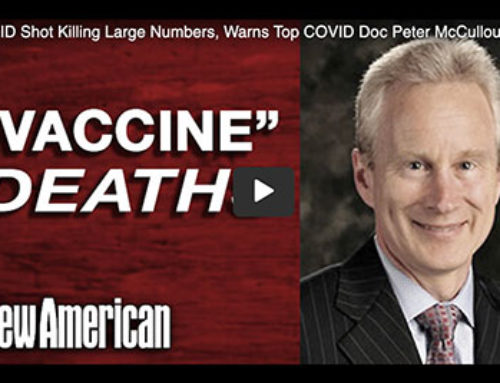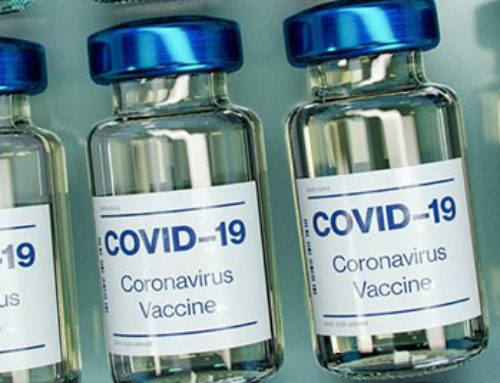Since word of a new severe respiratory illness that began in Wuhan, China surfaced at the end of December 2019, our way of life has gradually been altered and millions have been transfixed by the ominous reports the news media broadcasts every day.
 Previously unknown to many in our country, places such as Hubei Province and its capital, the city of Wuhan, have become somewhat notorious in the scourge that has now engulfed a large part of our world. This is where the alleged new threat arose – a novel coronavirus that has infected thousands, causing many deaths. Coronaviruses cause diseases in mammals and birds. It is a known fact that these viruses can on rare occasions be transmitted from animals to humans, causing new and often potentially deadly diseases. Examples include SARS (Severe Acute Respiratory Syndrome) that appeared in 2002 and MERS (Middle East Respiratory Syndrome) that appeared in 2012. The SARS fatality rate was 14-15 percent, while MERS was even higher, at over 34 percent. Fortunately, these diseases were contained. Then, of course, there are the familiar bird flu that first appeared in 1997, and the swine flu of 2009. The bird flu was difficult to transmit from person to person and this is fortuitous, since the mortality rate was a whopping 60 percent. The new coronavirus, which causes COVID-19, has proven to be highly transmissible and can be quite virulent. The virus arose in the bat population and, through a mutation (mutations are typical for RNA-based viruses), it became capable of being transmitted to human beings. Some have speculated that this new coronavirus was genetically engineered in a Wuhan laboratory dedicated to developing biological warfare agents, but I will leave this so-called conspiracy theory for another time.
Previously unknown to many in our country, places such as Hubei Province and its capital, the city of Wuhan, have become somewhat notorious in the scourge that has now engulfed a large part of our world. This is where the alleged new threat arose – a novel coronavirus that has infected thousands, causing many deaths. Coronaviruses cause diseases in mammals and birds. It is a known fact that these viruses can on rare occasions be transmitted from animals to humans, causing new and often potentially deadly diseases. Examples include SARS (Severe Acute Respiratory Syndrome) that appeared in 2002 and MERS (Middle East Respiratory Syndrome) that appeared in 2012. The SARS fatality rate was 14-15 percent, while MERS was even higher, at over 34 percent. Fortunately, these diseases were contained. Then, of course, there are the familiar bird flu that first appeared in 1997, and the swine flu of 2009. The bird flu was difficult to transmit from person to person and this is fortuitous, since the mortality rate was a whopping 60 percent. The new coronavirus, which causes COVID-19, has proven to be highly transmissible and can be quite virulent. The virus arose in the bat population and, through a mutation (mutations are typical for RNA-based viruses), it became capable of being transmitted to human beings. Some have speculated that this new coronavirus was genetically engineered in a Wuhan laboratory dedicated to developing biological warfare agents, but I will leave this so-called conspiracy theory for another time.
The imagery and information about COVID-19 being disseminated through social media and mainstream news outlets has been scaring the daylights out of many people, while at the same time generating quite a bit of cynicism in others. There is no question that people are being infected and quite a few are dying. But how much is fact and how much is fiction? This is one good reason why it is so important for us to be balanced in our understanding of the novel coronavirus phenomenon and its potential impact. This is not the time to panic nor to overreact. If there was ever an opportunity to trust in God to help us through an emerging crisis, it is now. With that in mind, I am going to share the facts as we know them today. Some may be disappointed by what I am about to say, because they are hoping for a reprieve from what they may feel is a hoax. They would rather just close their eyes and make this new reality that has engulfed our world go away. It would be much more palatable to dismiss it as a gross exaggeration which, quite frankly, I myself would like to do. And indeed, the media is exploiting much of the story clearly for political purposes. That is the worst part. Nonetheless, there are hard facts to objectively consider. If nothing else, it would be prudent to err on the side of caution. That being said, it is imperative that we are aware of the measures to take in order to minimize exposure to this novel coronavirus and to prevent its spread to others. In order to foster a more balanced perspective on this subject, let me share a few historical facts.

There are, unfortunately, certain startling similarities between the Spanish flu pandemic and the current coronavirus outbreak. Following the appearance of a new acute respiratory illness in Wuhan, China at the end of December 2019, public health officials identified the causative organism – a novel coronavirus, or a coronavirus not previously known or identified. This is one of the more concerning aspects of the new virus. As most of us know from the news media reports, this new virus spread rapidly through China, and COVID-19, the acute respiratory illness it causes, grew exponentially. However, it was some of the aggressive and seemingly outlandish methods China utilized that were ultimately responsible for containing the virus, although such practices bordered on what many critics singled out as human rights violations. Rather sadly, however, the only way to prevent a new strain of virus from being disseminated throughout the populace is by aggressive methods, including the isolation of infected individuals. This includes quarantines and lockdowns – scenarios that are fairly intolerable for most of us.
While the preceding historical retrospective may be somewhat illuminating, we are still left with the question, how real is the novel coronavirus threat? Well, if there is a bottom line to it all, it is simply this: the novel coronavirus has not been encountered by our immune systems before. Our bodies have no defenses against the virus because we have not been exposed to it or to any similar virus before. We have no antibodies to stave off infection. This makes us the perfect host for this virus. The degree of illness we may experience depends upon the status of our immune system at the time. Anyone who receives a sufficient exposure to the novel coronavirus will invariably become sick. In that way, the situation is similar to the Spanish flu, and the potential consequences are obvious and staggering if the virus is not contained. And therein lies the key. We must be proactive. Each one of us. It is vital to do everything possible to maintain our health and foster a strong immune response. Among other things, we need to get serious about eating a healthful diet, getting plenty of exercise, and generally being diligent in following all the other rules of healthy living. We must also follow some reasonable guidelines to minimize the likelihood of exposure to the disease, and to protect others from the same.

As a result of completely understandable concerns arising from the latest developments, people are panicking and behaving irrationally and irresponsibly. Some are hoarding food and supplies, leaving grocery and other retail store shelves bare. Some are literally getting into physical altercations with others over toilet paper. Some retailers are taking advantage of the pandemic and engaging in price gouging. Others are promoting so-called natural cures that, in reality, have little if any value except to generate tidy profits by capitalizing on the fear factor. So, for those professing to be Christians and yet participating in such thoughtless behaviors and reprehensible acts I say, where is God in all of this? This may well be the real acid test to see where many of us actually stand in our faith. The fact is, if there was ever a time to reflect on one’s faith and relationship with God, it is surely right now. This pandemic and the potential economic collapse and imminent moral decay should be of no surprise to any of us. These events are prophetic — right out of Matthew 24 and other scriptures. On a pragmatic level, there is no reason to fear. There are simple and sensible precautions each one of us can take to protect ourselves from COVID-19.
So, whether one is convinced of the urgency of the situation or not, the rational person will err on the side of caution and do what is necessary to navigate through the current crisis. Ultimately, this too shall pass.
The foregoing being said, let’s look at what we can do to prevent COVID-19. What informed sources know about the virus is that it can indeed pose a significant health risk to those over 60 years of age, those with pre-existing medical conditions, or those with a compromised immune system. The mortality rate understandably increases substantially for those in their seventies or eighties, just as would be the case with the flu or any other serious respiratory illness. For the most part, younger adults and children appear to experience less severe infection. However, this can change radically almost overnight, just as it did with the second wave of the Spanish flu. As mentioned earlier, RNA-based viruses tend to mutate. Should this occur with COVID-19, the results can potentially be as devastating as those of the Spanish flu. Therefore, it is both reasonable and essential to follow some basic rules to prevent exposure and minimize infection, particularly since we cannot predict the outcome of the pandemic at this point.

Again, I want to stress the fact that there is absolutely no reason to panic or overreact. Preparedness and common sense should prevail. Keep in mind that many of the same recommendations would apply even if this were a major flu outbreak. Most of all, we should pray that infections with COVID-19 will decline, as has happened in other pandemics, and that our families and loved ones will be protected until that occurs.
By Arnie Suntag
Arnie Suntag is the founder and president of Walk of Faith, an organization that conducts seminars and educational series on health and disease prevention and provides outreach services to the community.
- Arnie Suntag: Truth is Fallen in the Street - September 1, 2021
- Are You Frying Your Brain? - June 20, 2020
- Where are the Seventh-day Adventists? - May 14, 2020





